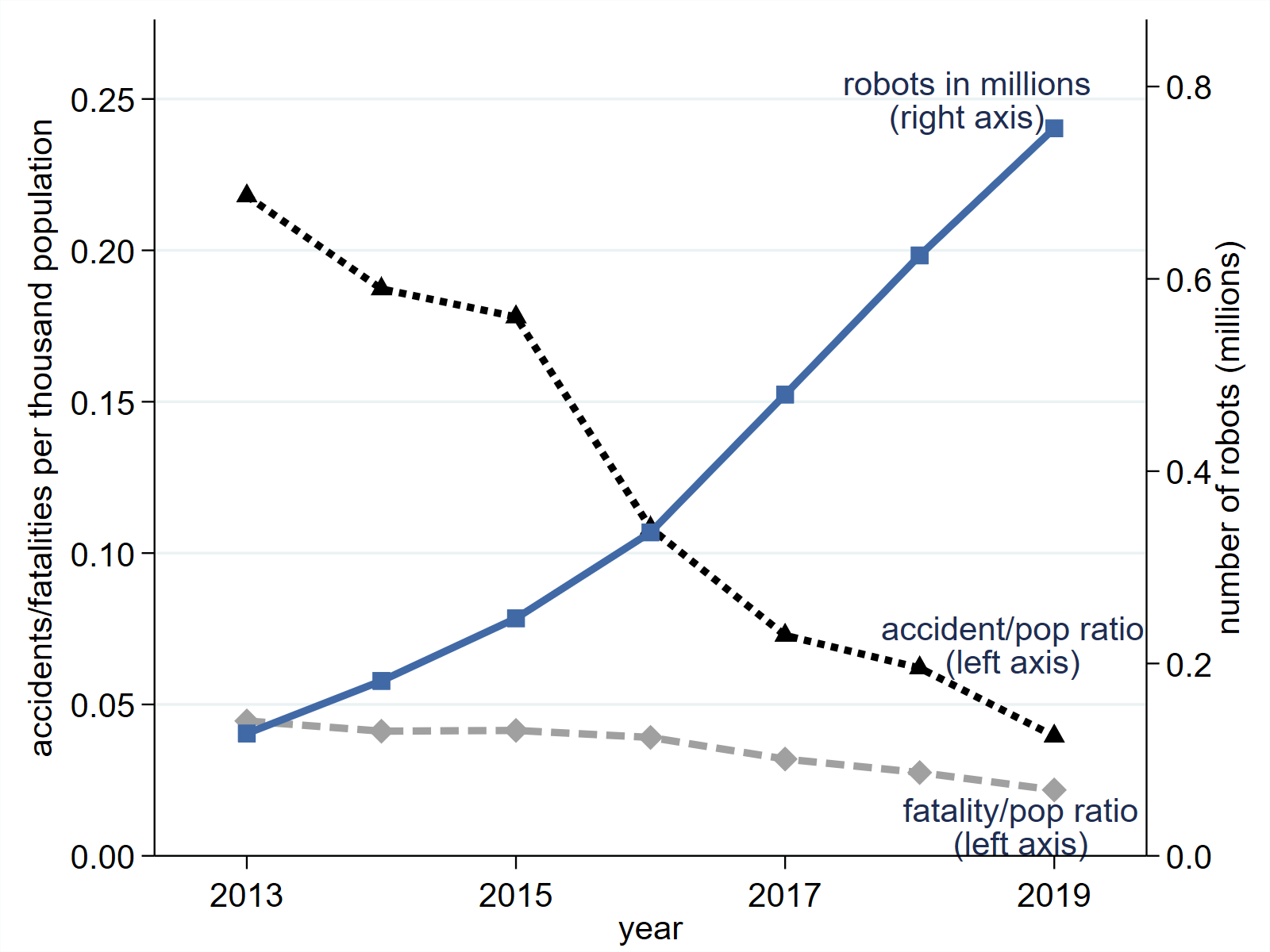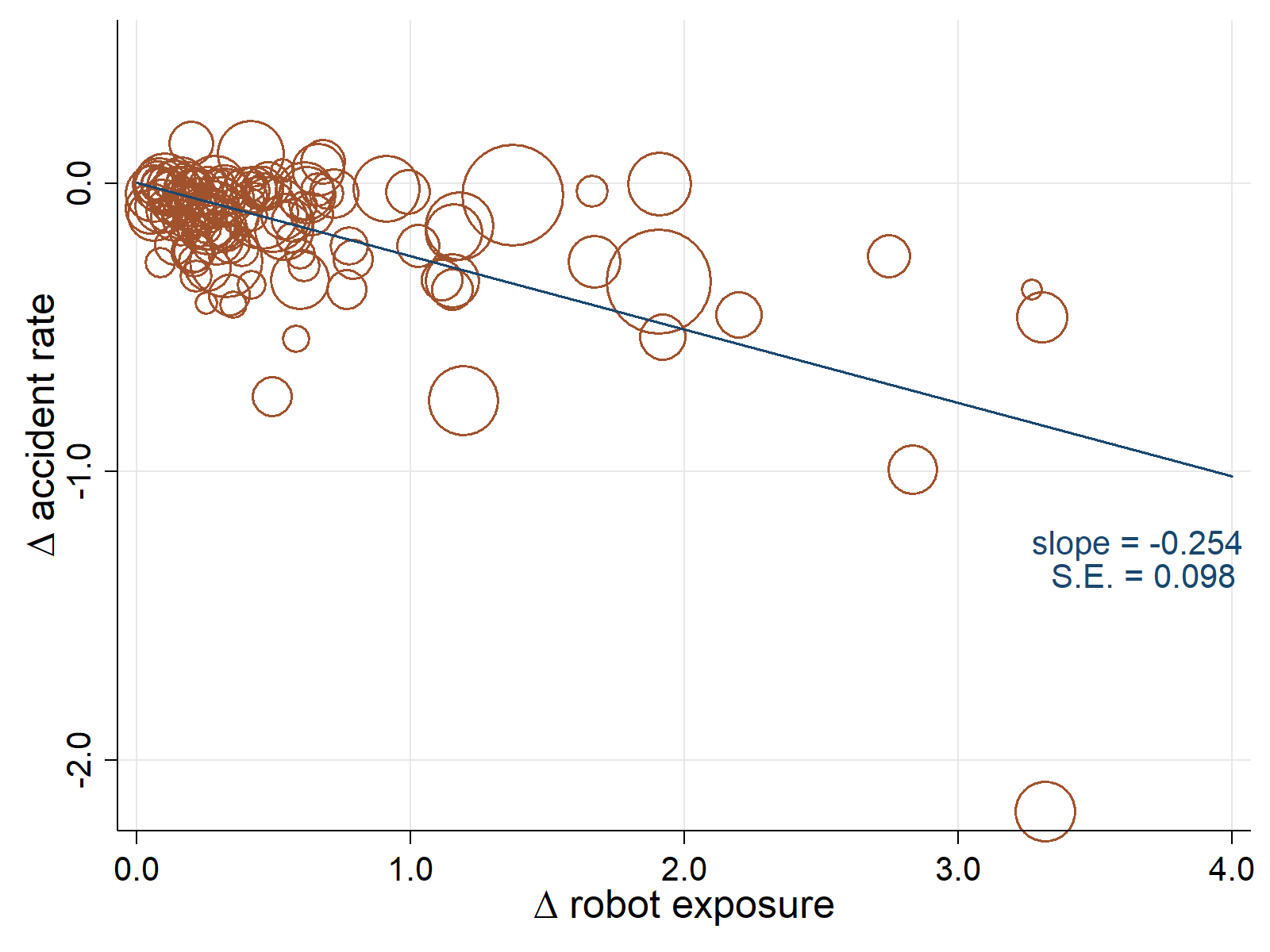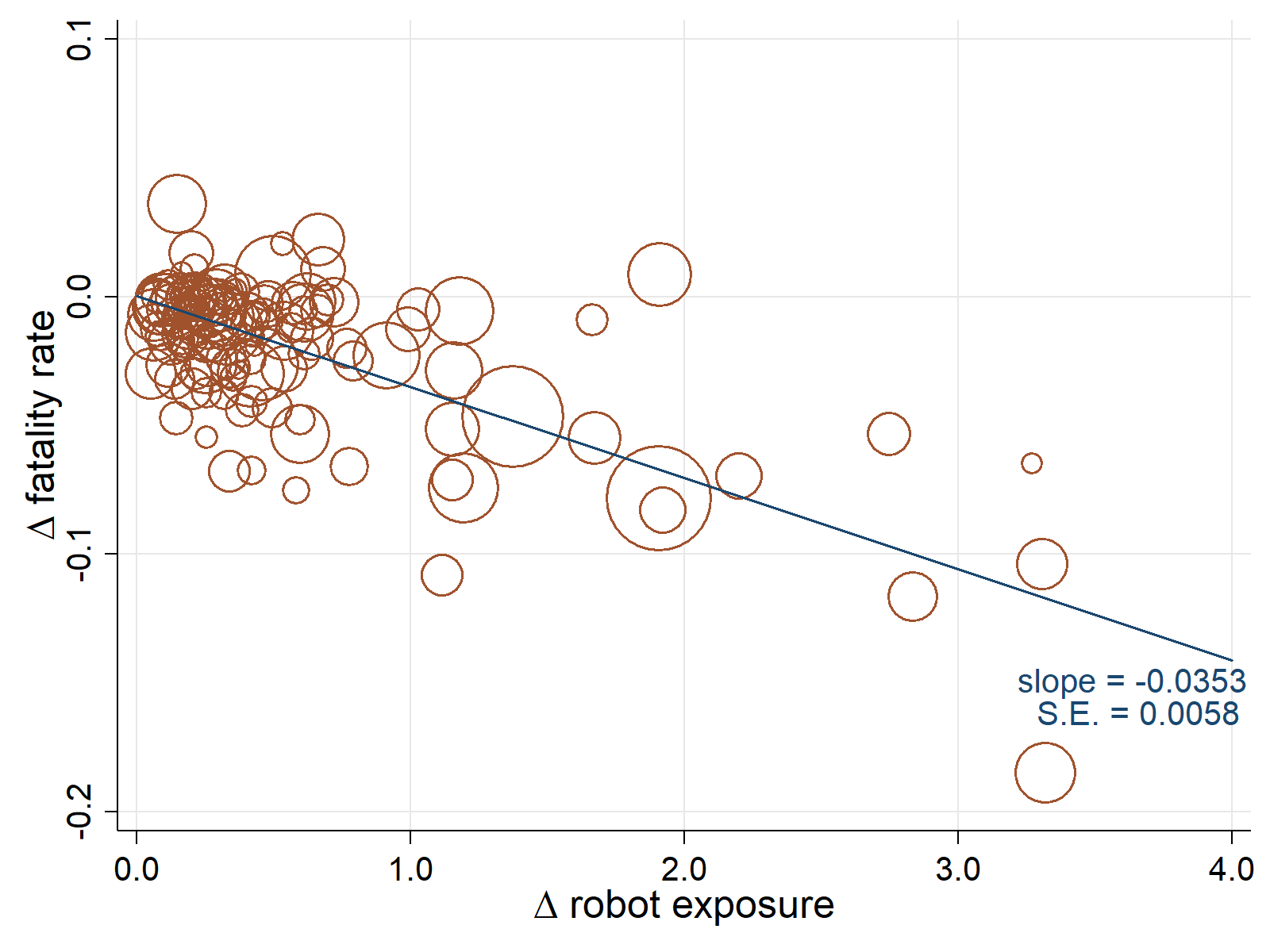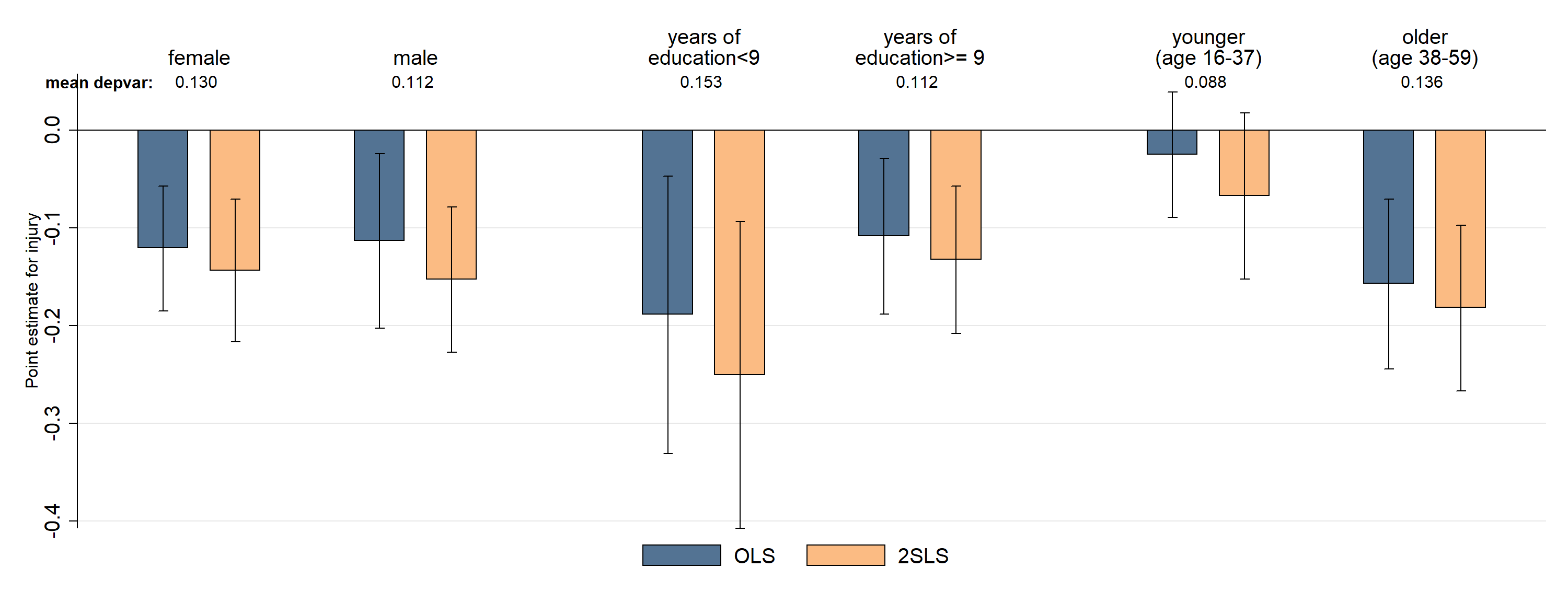
The rise of industrial robots in China has significantly improved worker safety, leading to fewer workplace accidents, injuries, and fatalities.
Each year, 2.3 million people die from work-related accidents and diseases worldwide. This problem is particularly severe in developing countries, where safety regulations are weaker. Globalisation exacerbates this issue by shifting hazardous jobs to these regions. Improving workplace safety in developing countries is thus a pressing concern for both local policymakers and global labour advocates.
Industrial robots can help protect workers
The term robot was first introduced in the 1920 play Rossum’s Universal Robots. Derived from the Czech word robota, meaning forced labour or drudgery, robots have long been associated with hard, repetitive work. Today, industrial robots are employed in sectors where dangerous tasks—such as welding, material handling, and foundry work—are common. In this sense, robots live up to their etymology by taking over the most hazardous aspects of production, protecting workers from potential harm. Robots have the potential to greatly enhance workplace safety.
While much of academic research and public discourse centres on concerns over robots replacing human labour (Graetz and Michaels 2018, Acemoglu and Restrepo 2020), it is equally important to emphasise the substantial safety benefits they provide. For instance, research on the US shows that robot exposure has been linked to reductions in workplace injuries and health complaints, particularly among low-skilled workers (Gihleb et al. 2022, Gunadi and Ryu 2021). Building on this evidence, in our recent work, we explore the relationship between industrial robot adoption and workplace safety improvements in Chinese cities (Luo et al. 2025).
The rise of industrial robots improved workplace safety in China
The stock of industrial robots in China increased from 127,193 in 2013 to 756,527 in 2019—an increase of 495%. Since 2016, China has maintained the world's largest stock of robots (Cheng et al. 2019). Over the same period, workplace safety in China has significantly improved. As shown in Figure 1, the annual number of workplace accidents fell by around 82% between 2013 and 2019, while the fatality rate dropped by 51%.
Figure 1: Changes in robot exposure and workplace safety

Notes: This figure plots the annual number of accidents and fatalities per thousand population (left axis) and the total number of robots in millions (right axis) from 2013 to 2019. Workplace accidents are defined as those involving severe injuries, fatalities, or economic losses exceeding 1 million yuan. Data sources: International Federation of Robotics and local municipal statistical bulletins.
To examine the causal relationship between robot adoption and workplace safety, we constructed a city-specific measure of robot exposure. Cities with a larger share of workers employed in industries experiencing higher robot adoption—such as the automobile, electronics, and electrical sectors—were considered more exposed. Conversely, cities with a workforce concentrated in less-automated industries—such as furniture manufacturing and construction—were classified as less exposed.
As illustrated in Figure 2, the increase in robot exposure between 2013 and 2019 led to significant reductions in workplace accidents and fatalities. Specifically, for every one robot per 1,000 workers there are 0.254 fewer accidents, while fatalities decrease by 0.0353. Using a back-of-the-envelope calculation, we estimate that the rise in robot adoption accounts for a 68.5% reduction in accidents and 71% decline in fatalities over the sample period. Sensitivity checks confirm that increased robot exposure, as opposed to other confounding factors, drove these improvements.
Our results remain robust even after excluding cities with substantial mining employment. This is significant given that China’s mining sector has a particularly poor workplace safety record (Jia and Nie 2017). Although adoption is still low, robots are increasingly used in mining, performing high-risk tasks such as placing explosives and reinforcing mine walls; robots could thus significantly improve safety in the industry.
Figure 2: The impact of robot exposure on accident and fatality rates


Notes: Accident and fatality rates refer to the number of accidents and fatalities per thousand population. The horizontal axis indicates the 2013-2019 change in robot exposure, while the vertical axis indicates the changes in accident and fatality rates. Marker size indicates the initial city employment. Data sources: Statistical Bulletins, International Federation of Robotics, and 2005 Mini-Census.
Robots reduce workplace injuries the most for older and less educated workers
Beyond city-level data, we analyse the effects of robot exposure on workplace injuries using disaggregated data from the China Health and Nutrition Survey (CHNS) between 2009 and 2015. Our findings indicate that robot exposure significantly reduces workplace injuries, particularly among workers in physically demanding jobs. A one-standard-deviation increase in robot exposure decreases the probability of injury by 2.25 percentage points.
Figure 3: Impacts on workplace injuries by demographic
Notes: We use CHNS data to estimate the effects of robot exposure (measured as robots per thousand workers) on workplace injuries (measured as percentage points). The figure presents OLS and 2SLS estimates by gender, education level, and age. The bars indicate point estimates, while the capped lines represent 90% confidence intervals. Data sources: CHNS, International Federation of Robotics, and China City Statistical Yearbooks.
Using the CHNS data, we also examine the heterogeneous effects of robot exposure across demographic groups. As shown in Figure 3, older workers and those with lower levels of education experience the most significant reductions in workplace injuries. Across occupations, the benefits are most pronounced for technicians, skilled workers, and junior professionals, and statistically insignificant for occupations unrelated to factory settings, such as senior professionals and service workers. These findings reinforce the view that robots improve worker safety by assuming the most hazardous tasks.
We also examined search trends on Baidu Index, China’s equivalent of Google Trends, to track workers' interest in topics such as "workplace injury certification" and "compensation for workplace injuries." Our findings show that cities with higher robot exposure experienced fewer searches for these terms. This decline in compensation-related searches reflects a broader improvement in workplace safety, as robots help reduce injuries and accidents, leading to fewer workers seeking compensation.
How do robots achieve these benefits for workers?
Robots can reduce workplace accidents directly by protecting workers who stay within the same occupation (the “within-occupation improvement” channel) and indirectly by reallocating workers towards safer occupations (the “reallocation” channel). Reduced employment due to robots can also lead to fewer workplace accidents as non-employed individuals are not exposed to such risks (the “non-employment” channel). Using a simple accounting framework, we find that the non-employment channel has a marginal impact, accounting for only 1% and 1.7% of the estimated impacts of robots on accident and fatality ratios, respectively. Instead, the within-occupation channel plays a more significant role by directly improving safety in workers' existing jobs.
Although industrial robots are often seen as a threat to jobs and wages, our research underscores their crucial role in enhancing workplace safety. In China, where industrial accidents have long been a concern, robots are creating safer work environments. Policymakers and business leaders should not only consider the labour market implications of automation, but also recognize its potential to improve worker well-being.
References
Acemoglu, D, and P Restrepo (2020), “Robots and jobs: Evidence from U.S. labor markets,” Journal of Political Economy, 128(6): 2188–2244.
Cheng, H, R Jia, D Li, and H Li (2019), “The rise of robots in China,” Journal of Economic Perspectives, 33(2): 71–88.
Gihleb, R, O Giuntella, L Stella, and T Wang (2022), “Industrial robots, workers’ safety, and health,” Labour Economics, 78: 102205.
Gunadi, C, and H Ryu (2021), “Does the rise of robotic technology make people healthier?” Health Economics, 30(9): 2047–2062.
Graetz, G, and G Michaels (2018), “Robots at work,” Review of Economics and Statistics, 100(5): 753–768.
Jia, R, and H Nie (2017), “Decentralization, collusion, and coal mine deaths,” Review of Economics and Statistics, 99(1): 105–118.
Luo, W, L Tang, Y Yang, and X Zou (2025), “Robots as guardians: Industrial automation and workplace safety in China,” Journal of Development Economics, 172: 103381.




